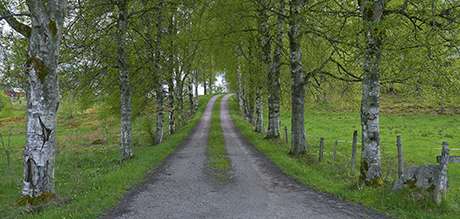Pollen allergies have increased among Swedish adults

The prevalence of pollen allergies among adults in Sweden has increased. However, the prevalence of allergies to furred animals, mites or mold has not. These were the results of a new study at Sahlgrenska Academy.
The prevalence of allergic diseases has increased since the mid-1900s, and today, approximately one fourth of Swedish adults has hayfever, while 10 percent suffer from asthma.
Asthma and hayfever are strongly linked to allergic sensitization, that is the prevalence of antibodies against allergens, for example, from pollen or furred animals.
A new study by the West Sweden Asthma Study at Sahlgrenska Academy, University of Gothenburg, shows that allergic sensitization to grass and birch pollen increased from 26 percent to 39 percent among adults, between 1992 and 2012. An increase that is statistically significant.
"We could not, however, see any statistically significant changes regarding allergic sensitization to furred animals, mites or mold," says Linda Ekerljung, Researcher at Sahlgrenska Academy.
Researchers see this as a possible explanation for hayfever, which is strongly associated with pollen sensitization, having increased from 22 percent to 31 percent in Sweden, between 1990-2008, while the incidence of asthma, that is strongly associated with furred animals and mite sensitization, remained unchanged for the same period. This is something that the research group has shown in previous studies.
"Our study also showed that the levels of both grass and birch pollen increased during the study period and that the length of the pollen season has increased. It is a possible explanation for the singular increase in allergic sensitization to pollen," says Anders Berg, physician and one of those who conducted the study.
In all probability, these plant species have benefited from the increasingly warmer summers. The average summer temperature has increased by 1.5 degrees Celsius, since the 1970s.
The study is based on allergy tests using skin prick tests and blood tests from 788 subjects, between the ages of 16 and 60 years of age and living in Vastra Gotaland. The subjects were randomly recruited from the more than 18,000 subjects participating in a larger questionnaire survey on asthma and allergies in Gothenburg and the general Vastra Gotaland region.
The study, Increase in pollen sensitization in Swedish adults and protective effect of keeping animals in childhood, was published in the scientific journal, Clinical and Experimental Allergy on June 6.
More information: Anders Bjerg et al, Increase in pollen sensitization in Swedish adults and protective effect of keeping animals in childhood, Clinical & Experimental Allergy (2016). DOI: 10.1111/cea.12757


















